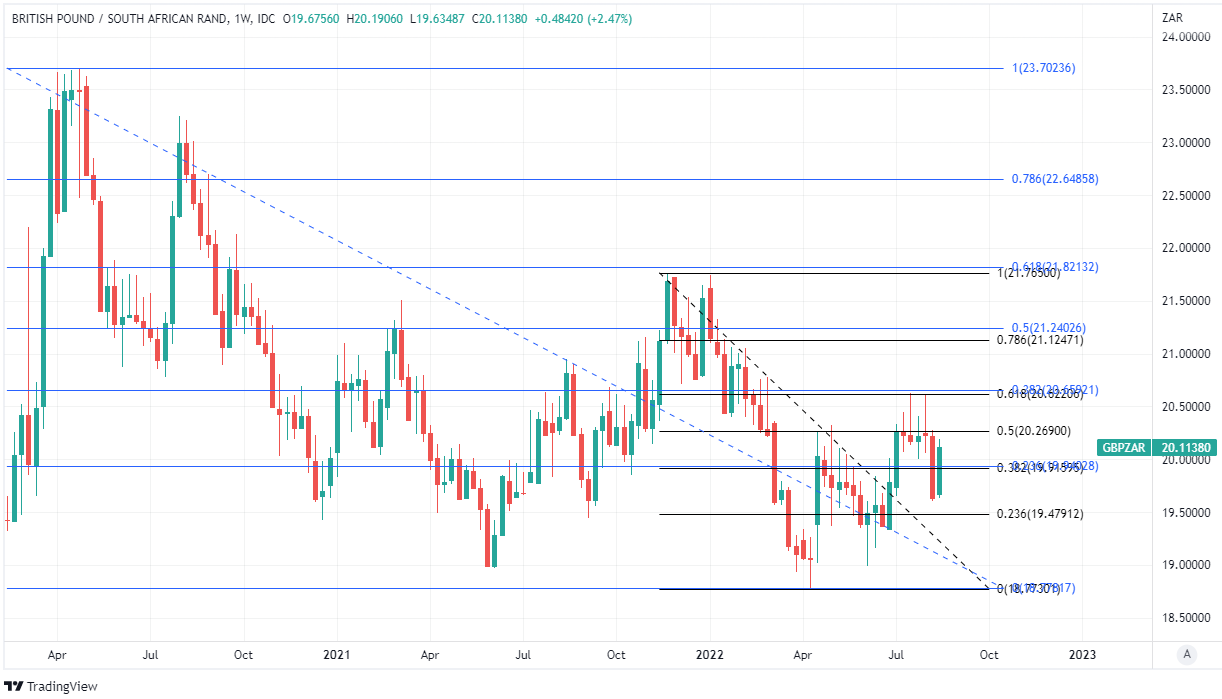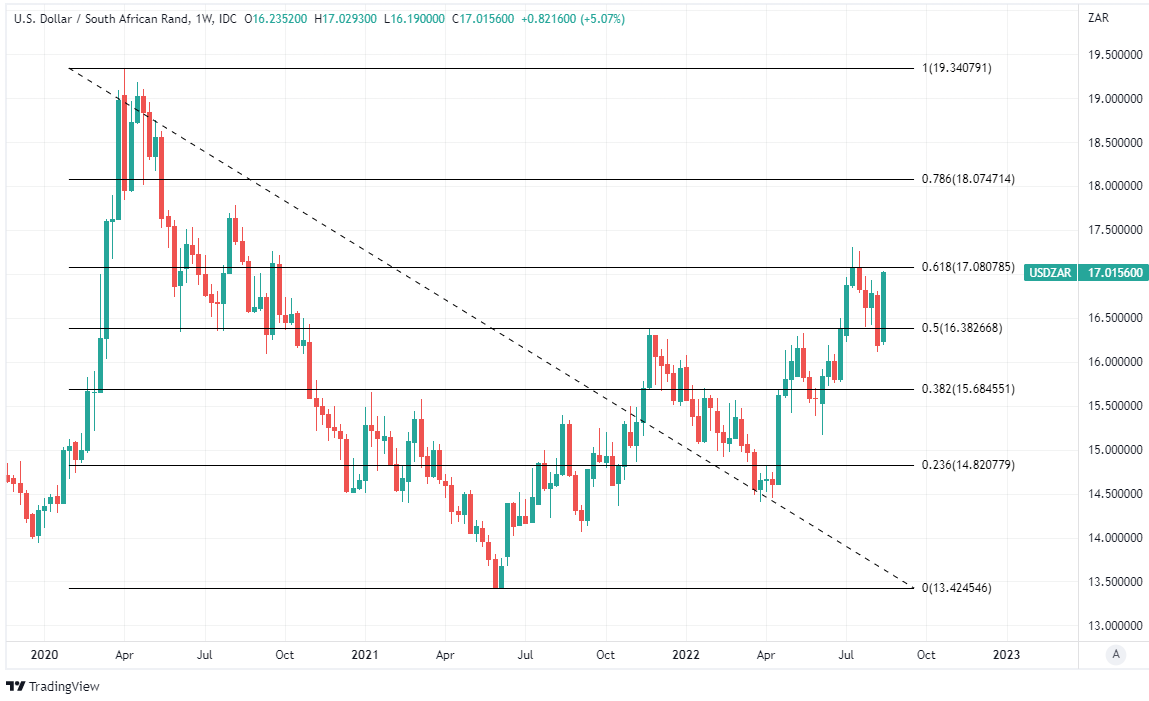South African Rand Nears Year Lows after Brutal Sell-off Scuppers Recovery
- Written by: James Skinner
-
"CNY movements are impacting EM currencies through a combination of risk sentiment and trade channels," - BofA Global Research

Image © Adobe Images
The South African Rand was closing in on some of its weakest level for more than a year ahead of the weekend after a sell-off in the Chinese Renminbi and rally by the U.S. Dollar scuppered a multi-week recovery and prompted a brutal rout in South African exchange rates.
South Africa's Rand was carrying losses against all G20 counterparts for the week by Friday after coming under pressure in the wake of a surprise Monday interest rate cut from the Peoples' Bank of China (PBoC) that came in response to poorer than expected economic figures from China for the month of July.
"This was accompanied by an unusual spike in onshore trading volumes and forward points turning less negative. This is consistent with FX intervention pushing spot trading volumes higher and CNY liquidity draining. The implication is that policy makers prefer CNY depreciation to be orderly and not at the expense of triggering portfolio outflows," says Claudio Piron, head of emerging market Asia fixed income and FX strategy at BofA Global Research.
"A cross check of three-month historical EM FX betas to the CNH, together with t-statistics of significance and betas is shown in Exhibit 6. In summary, there are nine EM currencies, but only five have a higher beta than the DXY USD index. These are ZAR, BRL, PLN and MXN, which suggest that CNY movements are impacting EM currencies through a combination of risk sentiment and trade channels," Piron wrote in summary of research published this week.
July's volley of industrial production, retail sales and fixed asset investment figures suggested that China's recovery from the damage done by the latest use of coronavirus containment measures has been slower than many economists had anticipated and enough so to have prompted the PBoC into action.
But China factors were not necessarily the only burden on the South African Rand during the week to Friday as the Dollar also strengthened of its own accord from mid-week onward when some U.S. economic figures came in better than was expected and minutes of the latest policy meeting suggested the Federal Reserve will not be easily dissuaded of its June plan to lift U.S. interest rates to as much as 3.5% this year and even further soon after.
"The market is now sitting on the fence between 50bp and 75bp for the September FOMC, with key activity data coming in the next few weeks. Our G10 team sees the USD close to the peak but likely to remain strong for a while. Moreover, China data is weakening again, but we don't expect decisive stimulus to follow up on the latest rate cut and still see $/CNH at 7.0 by year-end. This puts EEMEA FX under pressure from various fronts," says Mikhail Liluashvili, a macro strategist and BofA colleague of Piron.
"Our econometric model suggests the rand is overvalued right now. Moreover, the model predicts that the USDZAR should peak at 17.14 in September, based on BofA internal forecasts for EURUSD, key export and import prices of South Africa, policy rates in the US and South Africa as well as the global PMI," Liluashvili also said this week.
Above: USD/ZAR shown at weekly intervals with Fibonacci retracements of 2020 downtrend indicating possible areas of short and medium-term technical resistance.
Liluashvili and colleagues advocated earlier this week that clients sell the Rand and buy the Dollar in anticipation of a sustained break by USD/ZAR back above 17.0 and since then it has almost fully reversed four weeks of declines that had pulled the Dollar away from 61.8% Fibonacci retracement of the downtrend dating back to March 2020.
"Potentially weak Q2 GDP should add fuel to the fire. We expect Q2 GDP to contract -0.7% quarter-on-quarter down from our previous estimate of unchanged growth. The impact of floods in April and electricity blackouts in June is likely to drag the economy into a contraction. This should add some negative downward pressure to the outlook for South African rand," Liluashvili also said in relation to South African economic figures due out in early September.
Dollar gains and Rand lossses may also have been bolstered on Thursday and Friday by the latest remarks from Federal Reserve policymakers who appeared to contemplate aloud and in public this week whether the Fed should opt for a third consecutive 0.75% increase in U.S. interest rates for September.
That prospect had all but been written off during the final weeks of July when financial market speculation about the perceived odds of an imminent U.S. recession became rife ahead of a series of economic reports released in August and suggesting that U.S. inflation pressures may have moderated of late.
 Above: GBP/ZAR shown at weekly intervals with Fibonacci retracements of 2020 and 2022 downtrends indicating possible areas of short and medium-term technical resistance for Sterling and support for the Rand.
Above: GBP/ZAR shown at weekly intervals with Fibonacci retracements of 2020 and 2022 downtrends indicating possible areas of short and medium-term technical resistance for Sterling and support for the Rand.













